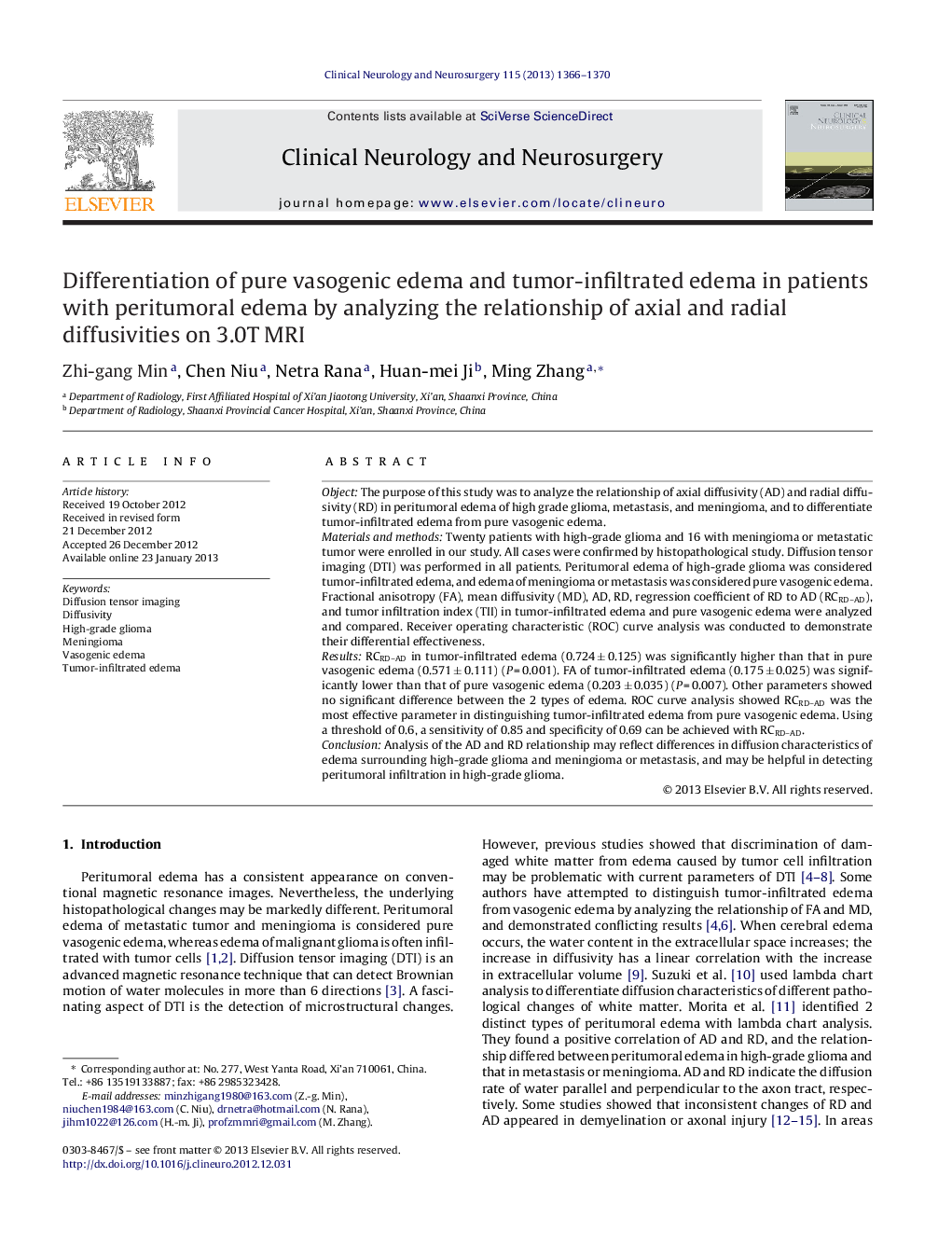| Article ID | Journal | Published Year | Pages | File Type |
|---|---|---|---|---|
| 6006882 | Clinical Neurology and Neurosurgery | 2013 | 5 Pages |
ObjectThe purpose of this study was to analyze the relationship of axial diffusivity (AD) and radial diffusivity (RD) in peritumoral edema of high grade glioma, metastasis, and meningioma, and to differentiate tumor-infiltrated edema from pure vasogenic edema.Materials and methodsTwenty patients with high-grade glioma and 16 with meningioma or metastatic tumor were enrolled in our study. All cases were confirmed by histopathological study. Diffusion tensor imaging (DTI) was performed in all patients. Peritumoral edema of high-grade glioma was considered tumor-infiltrated edema, and edema of meningioma or metastasis was considered pure vasogenic edema. Fractional anisotropy (FA), mean diffusivity (MD), AD, RD, regression coefficient of RD to AD (RCRD-AD), and tumor infiltration index (TII) in tumor-infiltrated edema and pure vasogenic edema were analyzed and compared. Receiver operating characteristic (ROC) curve analysis was conducted to demonstrate their differential effectiveness.ResultsRCRD-AD in tumor-infiltrated edema (0.724 ± 0.125) was significantly higher than that in pure vasogenic edema (0.571 ± 0.111) (P = 0.001). FA of tumor-infiltrated edema (0.175 ± 0.025) was significantly lower than that of pure vasogenic edema (0.203 ± 0.035) (P = 0.007). Other parameters showed no significant difference between the 2 types of edema. ROC curve analysis showed RCRD-AD was the most effective parameter in distinguishing tumor-infiltrated edema from pure vasogenic edema. Using a threshold of 0.6, a sensitivity of 0.85 and specificity of 0.69 can be achieved with RCRD-AD.ConclusionAnalysis of the AD and RD relationship may reflect differences in diffusion characteristics of edema surrounding high-grade glioma and meningioma or metastasis, and may be helpful in detecting peritumoral infiltration in high-grade glioma.
